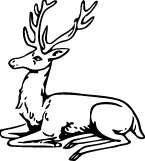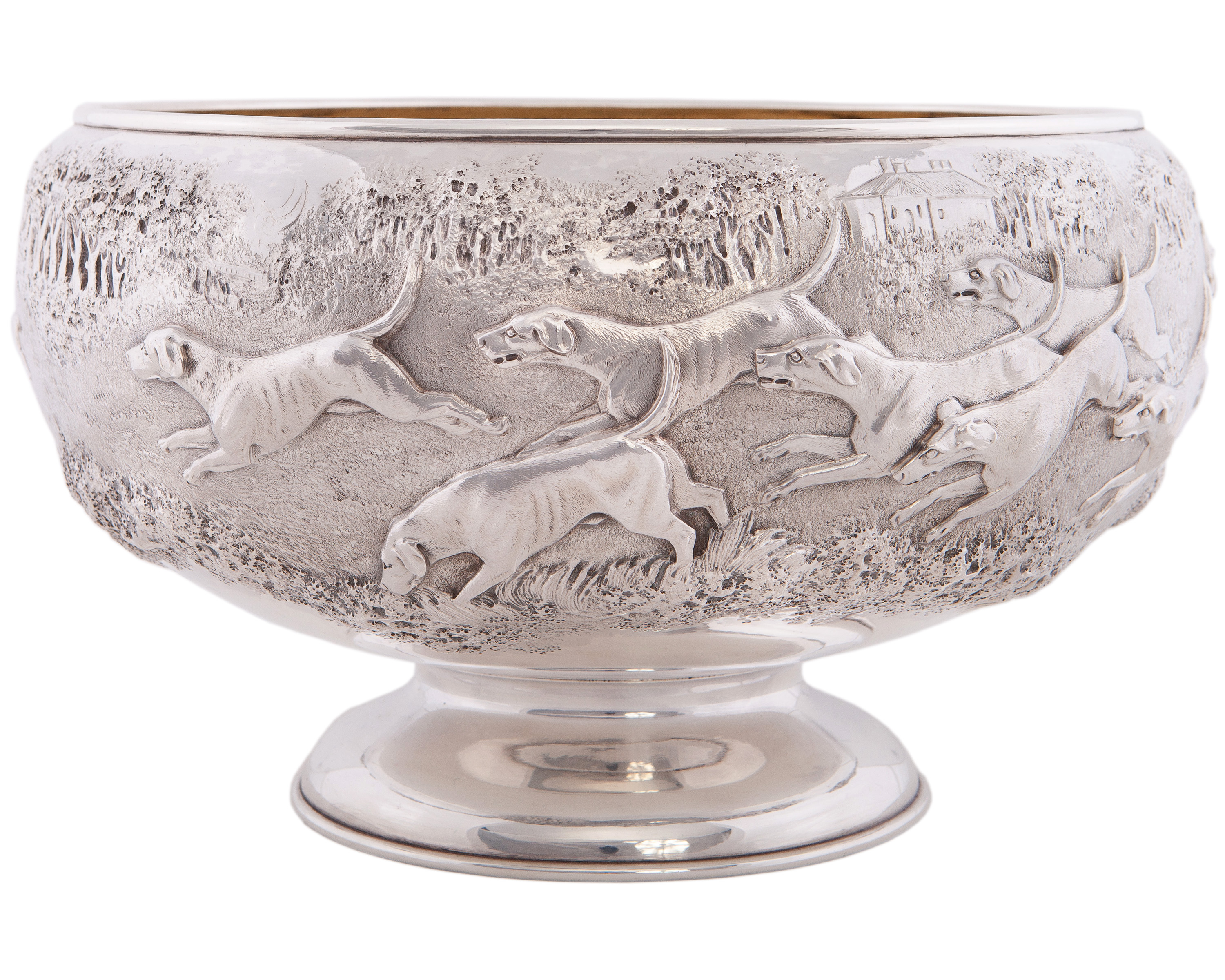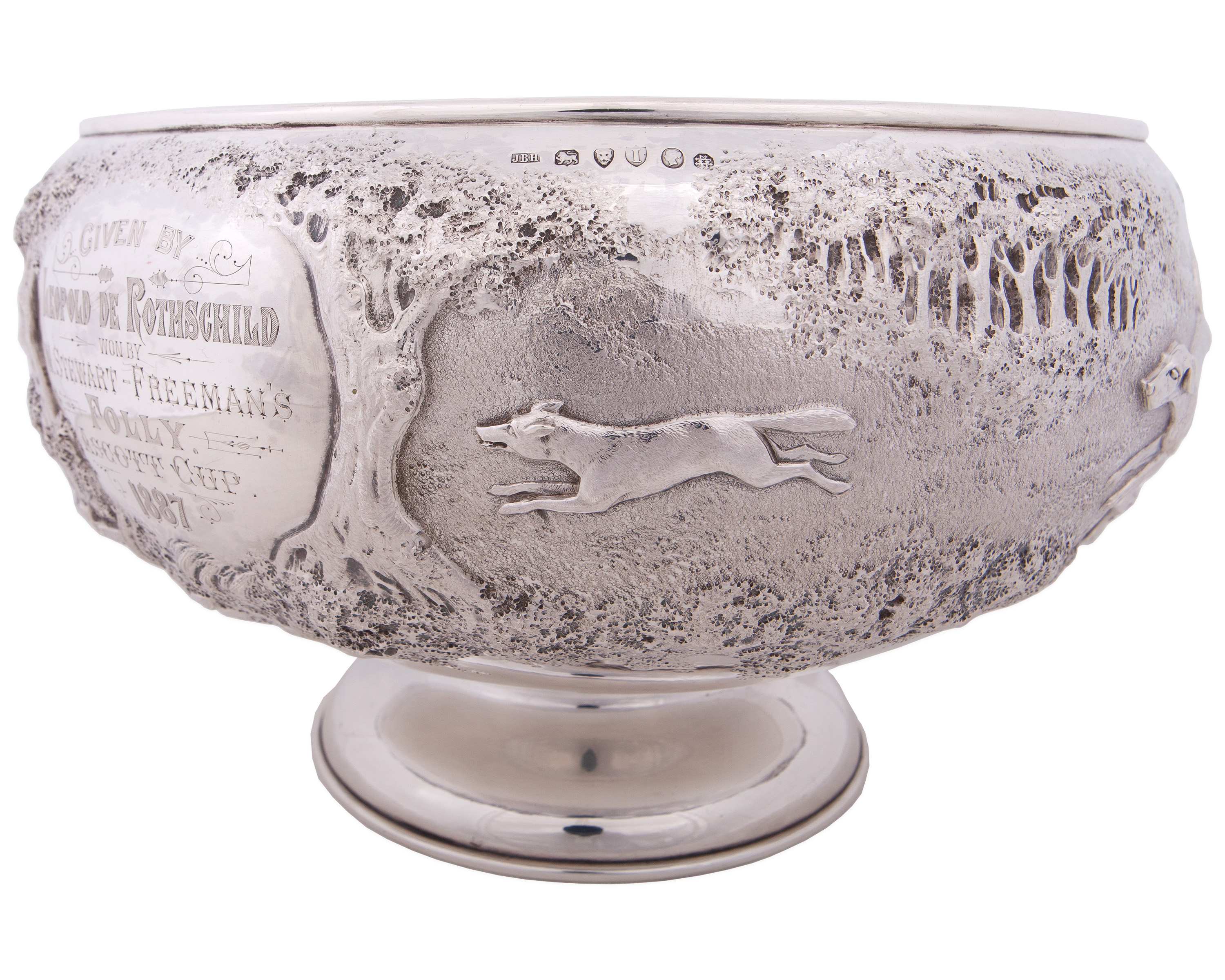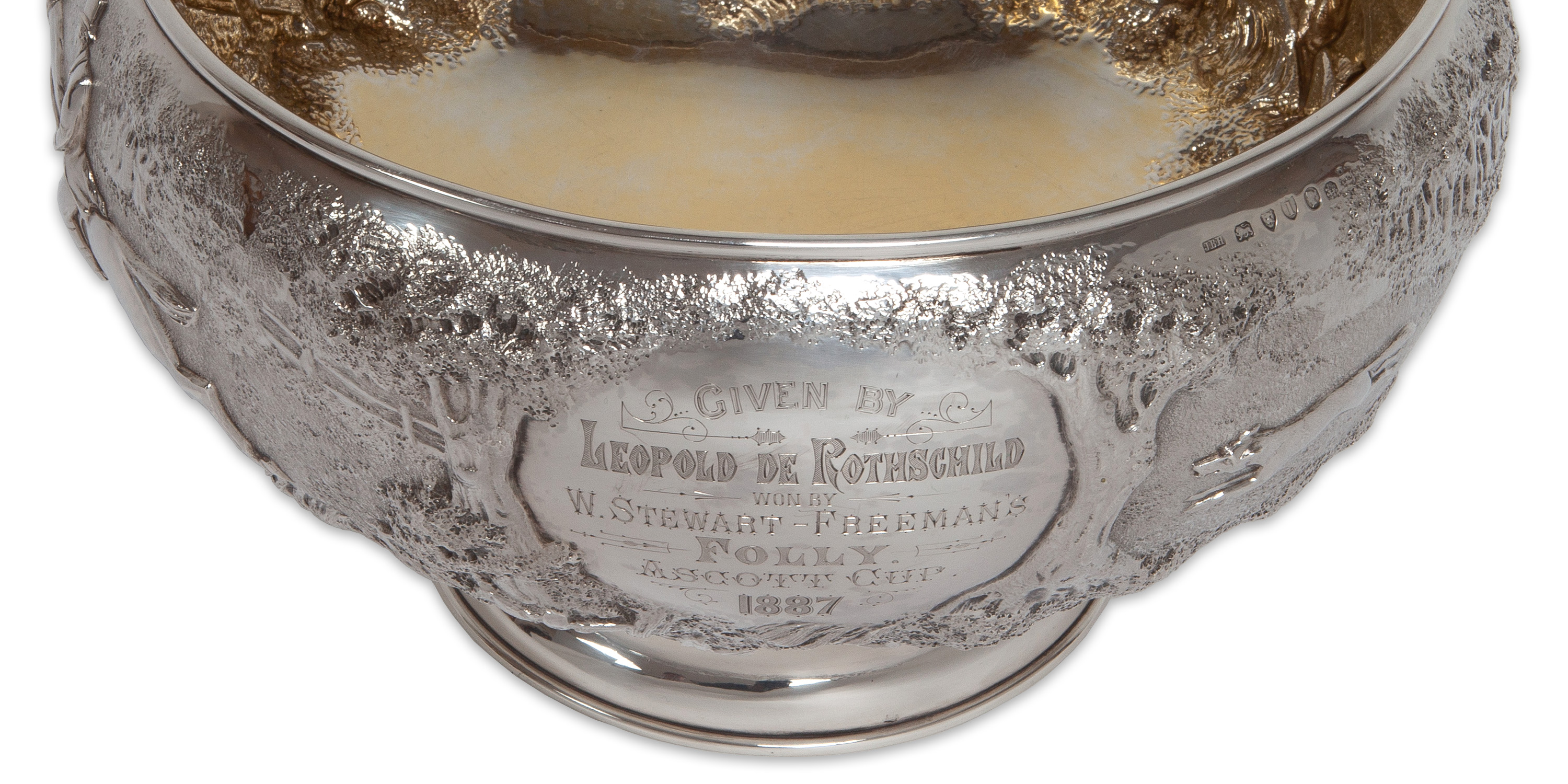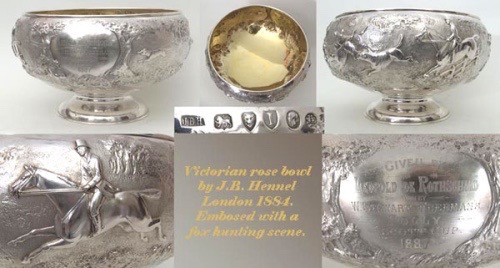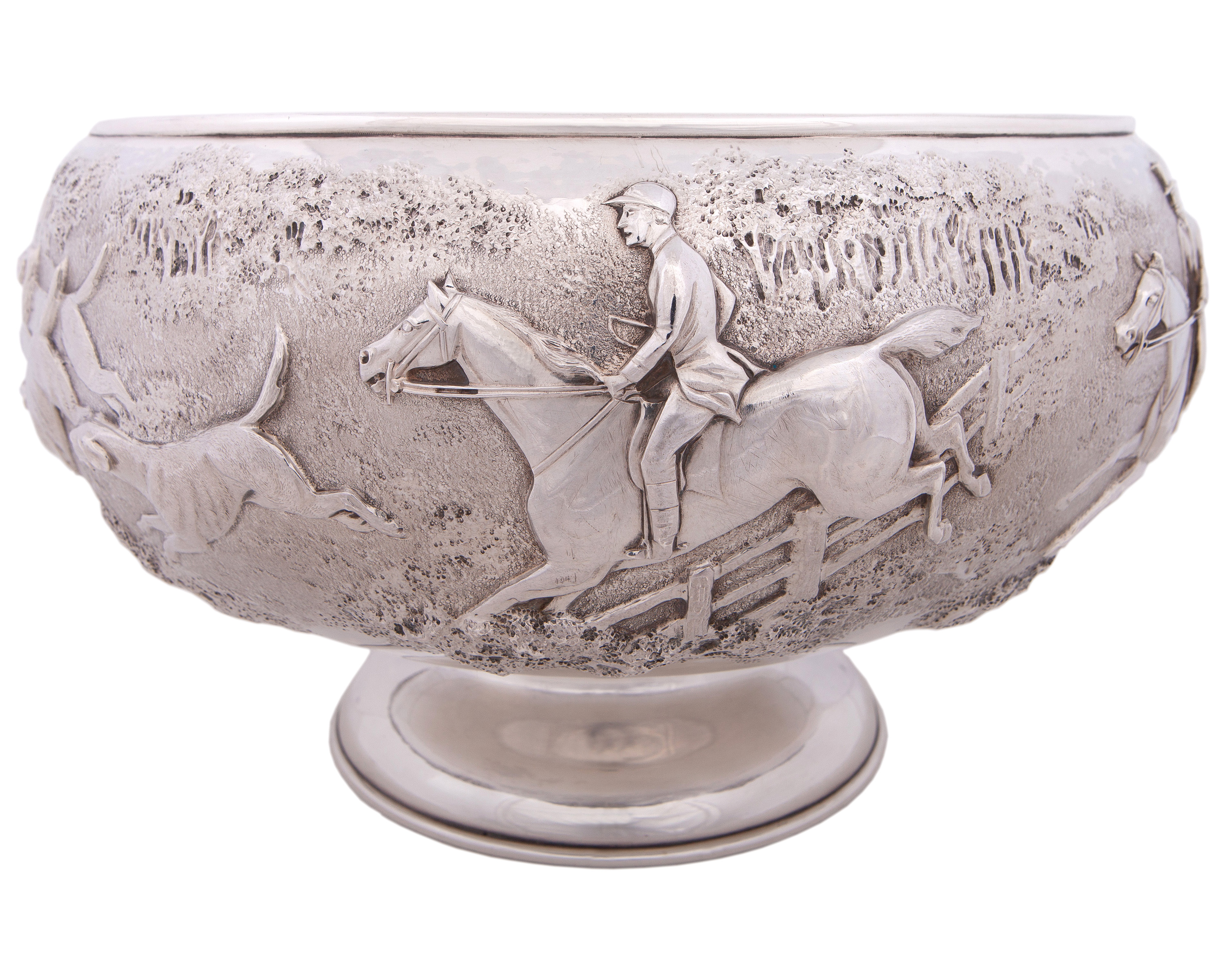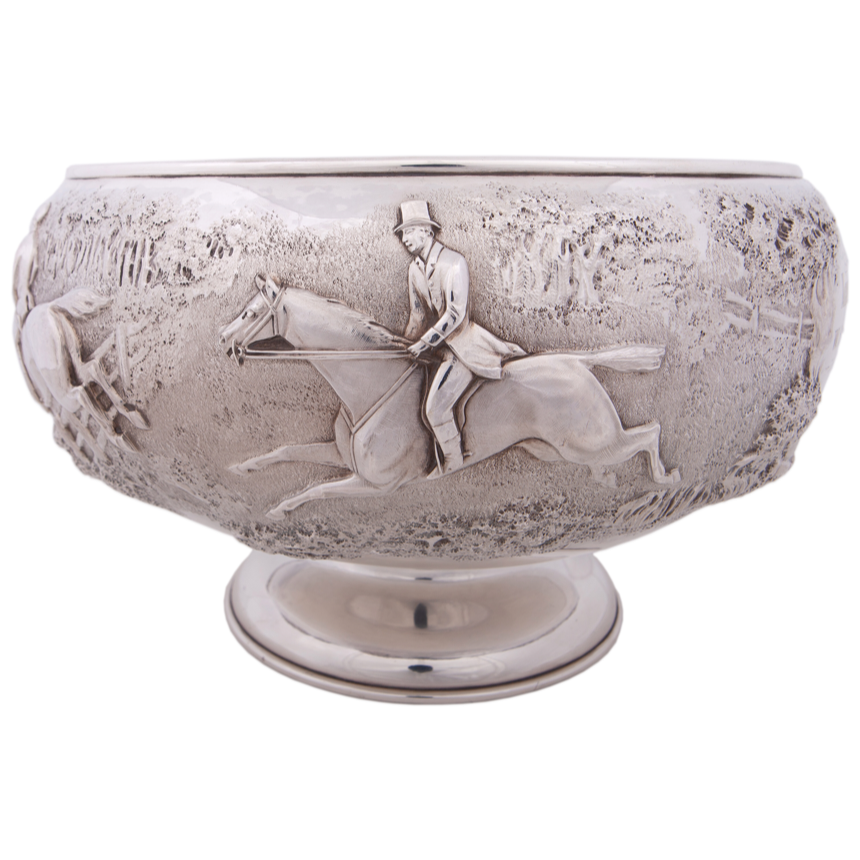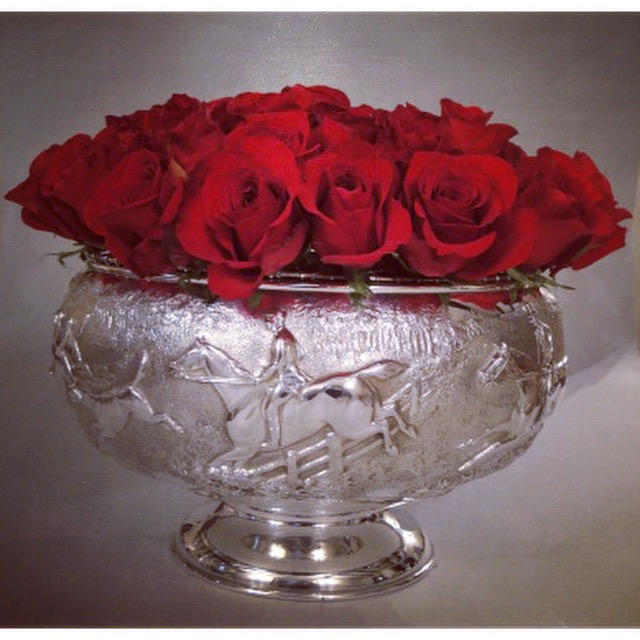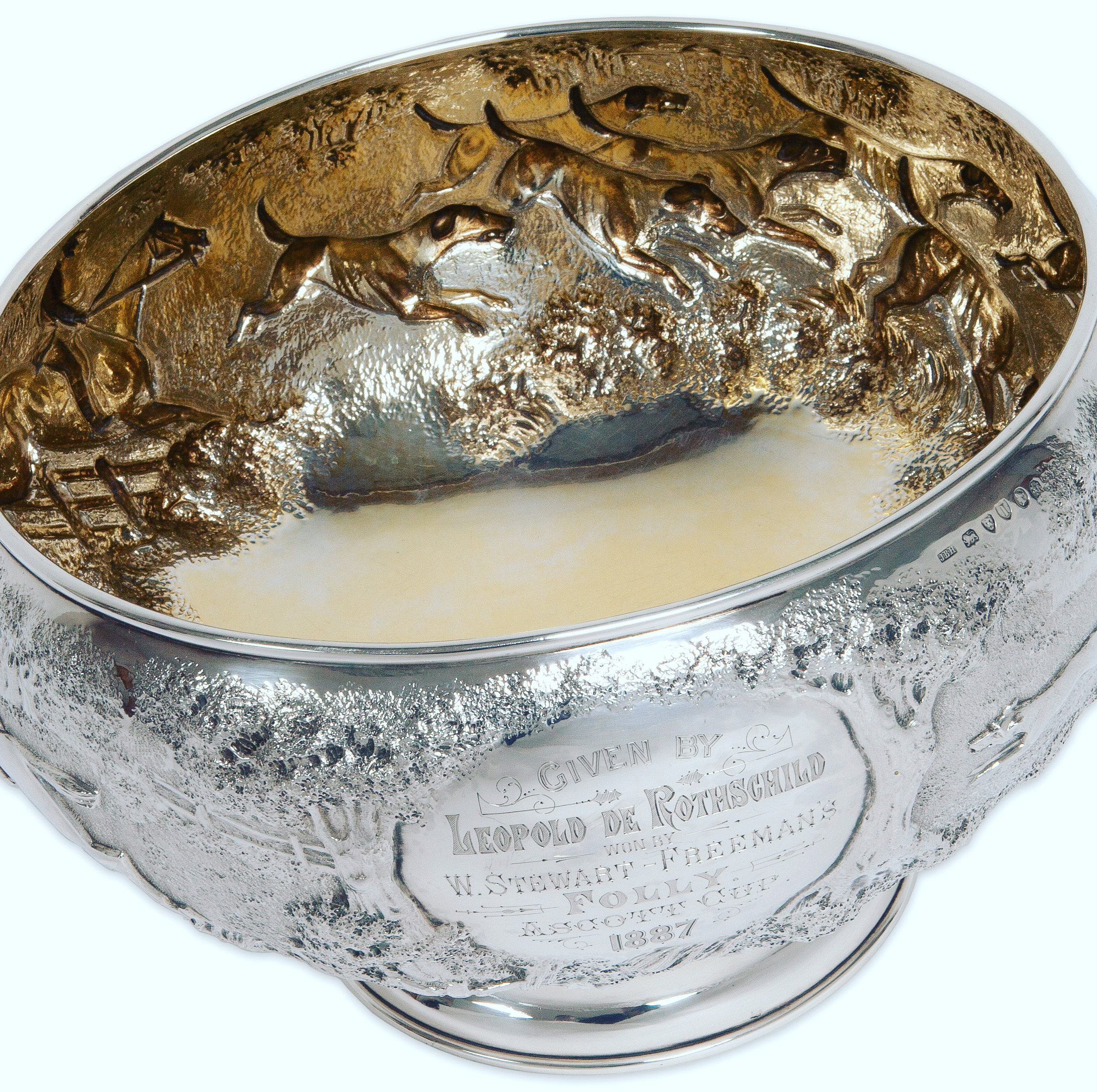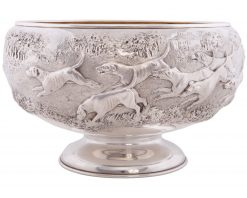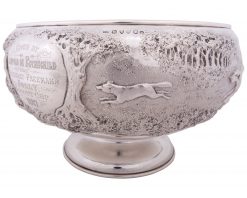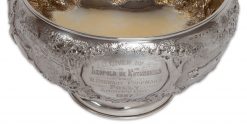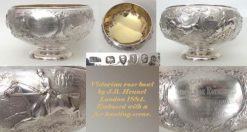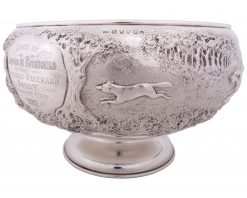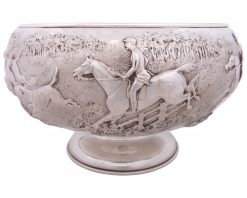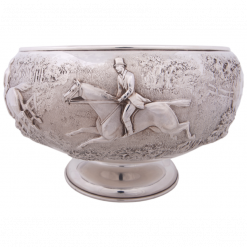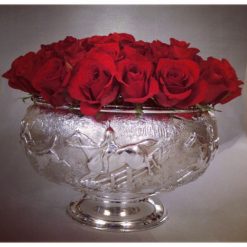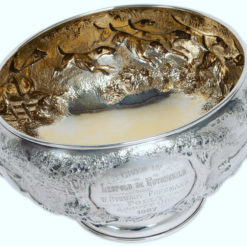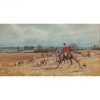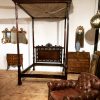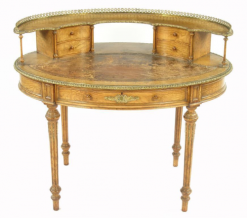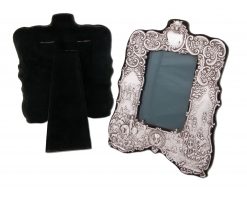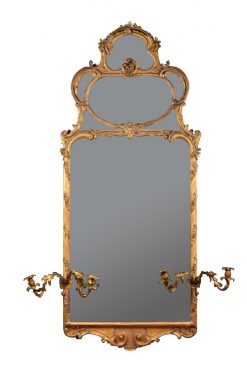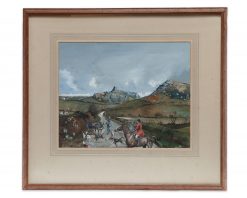A Magnificent and Rare Rothschild Silver Rose Bowl with a chased fox hunting scene
£19,500.00
A magnificent large Silver Victorian Rose Bowl with a chased fox hunting scene, depicting three and a half couple of hounds pursuing a fox in open landscape with the huntsman jumping a post and rail fence, a gentleman mounted with top hat and Ascott house.
Makers: James Berkeley Hennel, London 1884. Includes Company Trade Mark. Weight 55 Ounces. Gilt Interior.
IMPORTANT Rothschild connection. The Inscription is set between two oak trees and reads, “Given by Leopold De Rothschild, Won By W. Stewart-Freeman’s Folly, Ascott Cup 1887”
A magnificent and rare large Silver Victorian Rose Bowl with a chased fox hunting scene, depicting three and a half couple of hounds pursuing a fox in open landscape with the huntsman jumping a post and rail fence, a gentleman mounted with top hat and Ascott house.
Makers: James Berkeley Hennel, London 1884. Includes Company Trade Mark. Weight 55 Ounces. Gilt Interior.
IMPORTANT Rothschild connection. The Inscription is set between two oak trees and reads, “Given by Leopold De Rothschild, Won By W. Stewart-Freeman’s Folly, Ascott Cup 1887”
Leopold De Rothschild assembled a stable of some of the best thoroughbreds in Europe, his horses winning a number of prestigious races including the Epsom Derby, St. Leger Stakes and the Two Thousand Guineas.
ASCOTT is a hamlet half a mile east. Ascott Park, which was the winter residence of Leopold de Rothschild esq. C.V.O., D.L., J.P. Leopold de Rothschild 1845-1917) was the third son of Baron Lionel de Rothschild MP, and great grandson of Mayer Amschel Rothschild.
He purchased Ascott in Buckinghamshire in 1876 in order to turn it into a hunting box and during the following years the house was enlarged and transformed into a family home.
A Jacobean structure of brick and timber, dating from 1606, and was originally a farm house, but was restored and enlarged about 1874, and again in 1880, 1887, 1893 and 1911, and is now a considerable mansion.
Gladstones daughter, Mary, described Ascott after a visit in the 1880s as, A palace like cottage, the most luxurious and lovely thing I ever saw.
The kennels of Lord Rothschilds stag-hounds, originally at Mentmore, were transferred to Ascott: these stag-hounds (numbering 30 couples) meet on Monday and Thursday. Aylesbury and Leighton Buzzard are convenient towns for hunting visitors.
The Whaddon Chase foxhounds also met at Ascott, Ascott Kennels, which are to the north east of Ascott House itself. This bowl commissioned by the Rothschild family depicts a hunting scene with Ascott House Leopold De Rothschild’s close friend, H.R.H. Edward, Prince of Wales attended his wedding.
The Rothschilds purchased items from Fabergé exclusively from the firm’s London branch. In all twenty-five members of the family were customers from its opening to its closure in 1917.
The Royal and Rothschild families’ animals were the only ones to be modelled by Fabergé in England. King Edward VII and Queen Alexandra’s menagerie of animals at Sandringham were the first to be modelled. At the suggestion of Mrs George Keppel, in 1907 Fabergé sent sculptors from Russia to the estate to carve the animals in wax. The waxes were then returned to Russia and reproduced by the firm’s workshops in hardstone or silver.
As part of the commission the King’s favourite horse, Persimmon, was cast in silver and mounted on a nephrite base representing turf. It was this study of Persimmon and the horse’s connection to the Rothschilds that led to Fabergé’s modelling of Leopold’s animals.
Bainbridge and Mrs Leopold also arranged for two hounds from Leopold’s kennels at Ascott House to be modelled. The first, named Herald, was carved in sardonyx and bought by Mrs Leopold in 1909.Leopold himself bought the second of the hound Harbinger, in 1912 for £36. Bainbridge also noted Mrs Leopold’s fondness for her French Griffon, Pixie, and had her carved in chalcedony and mounted on a lapis-lazuli base. Mrs Leopold bought the study as soon as it was ready for £29 and kept it in the saloon of her Buckinghamshire home Ascott House. Leopold De Rothschild purchased and commissioned exclusive items from London shops for the family collection and gifts
| Sporting / Hunting Silver Collection |
|---|
